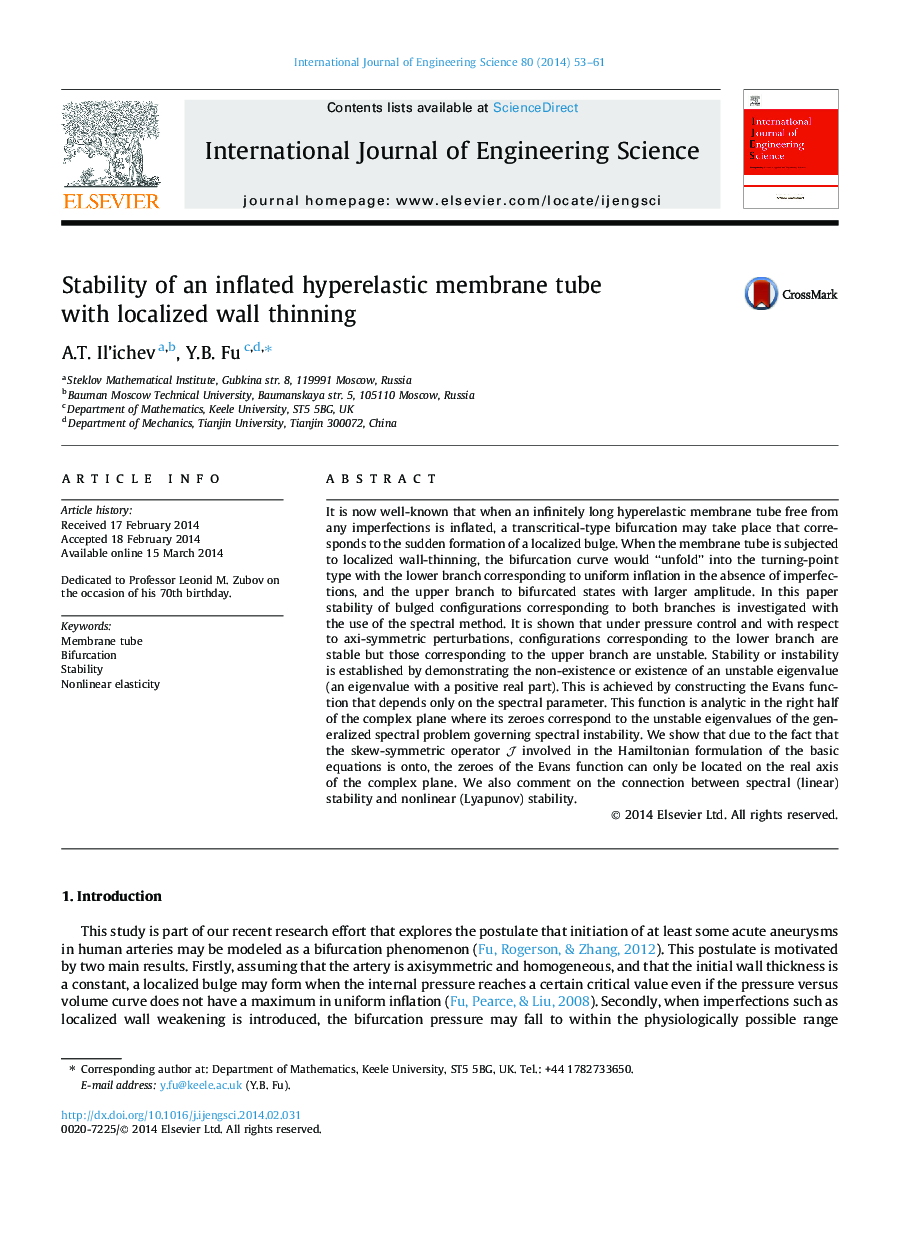| Article ID | Journal | Published Year | Pages | File Type |
|---|---|---|---|---|
| 824877 | International Journal of Engineering Science | 2014 | 9 Pages |
It is now well-known that when an infinitely long hyperelastic membrane tube free from any imperfections is inflated, a transcritical-type bifurcation may take place that corresponds to the sudden formation of a localized bulge. When the membrane tube is subjected to localized wall-thinning, the bifurcation curve would “unfold” into the turning-point type with the lower branch corresponding to uniform inflation in the absence of imperfections, and the upper branch to bifurcated states with larger amplitude. In this paper stability of bulged configurations corresponding to both branches is investigated with the use of the spectral method. It is shown that under pressure control and with respect to axi-symmetric perturbations, configurations corresponding to the lower branch are stable but those corresponding to the upper branch are unstable. Stability or instability is established by demonstrating the non-existence or existence of an unstable eigenvalue (an eigenvalue with a positive real part). This is achieved by constructing the Evans function that depends only on the spectral parameter. This function is analytic in the right half of the complex plane where its zeroes correspond to the unstable eigenvalues of the generalized spectral problem governing spectral instability. We show that due to the fact that the skew-symmetric operator JJ involved in the Hamiltonian formulation of the basic equations is onto, the zeroes of the Evans function can only be located on the real axis of the complex plane. We also comment on the connection between spectral (linear) stability and nonlinear (Lyapunov) stability.
